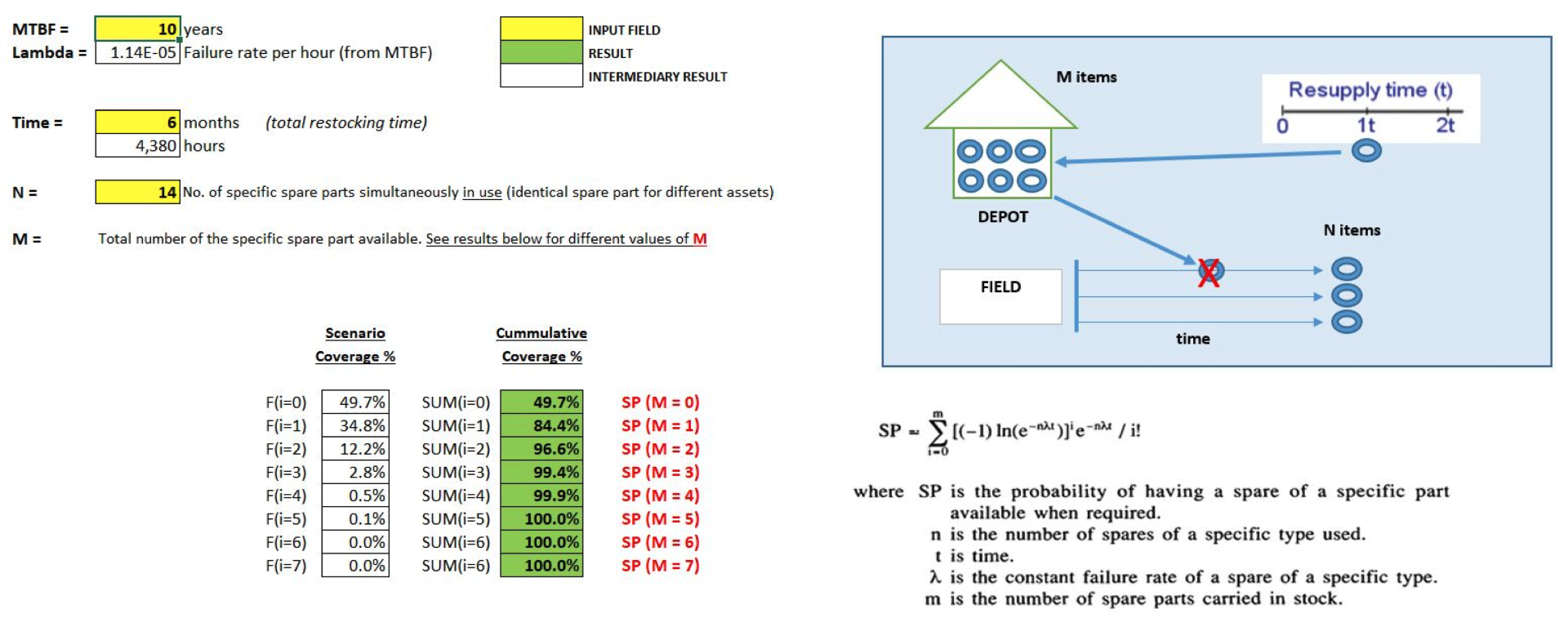This is one of the key prerequisites for achieving higher uptime of equipment (reducing repair times), yet balancing the supporting costs of spare parts and materials. Doing it right, means doing more with less: knowing which parts and how many may be needed, which will produce optimum financial results, as opposed to the (more industry common) spare parts “squirreling” strategy.
Prediction is straightforward for components having known useful life, and it involves some simple mathematics considering number of items, specifics of the procurement contract, and the (potential) issues with shelf life. Those cases are not a subject of this post.
Things get more complicated for random failures. What kind of data needs to be available in order to make the prediction? First, MTBF for the component, then the number of components simultaneously in operation, and finally the restocking time (how often you plan to replenish the stock).
By using Poisson distribution, it is possible to connect these three parameters into an equation that correlates equipment availability and number of spares in stock.
Make sure to have representative figures for MTBF. If this is not possible, target confidence interval must be established (ref. Chi-Square distribution), which will produce more conservative results.
Download Excel at: https://tetra-chrome.com/download/

